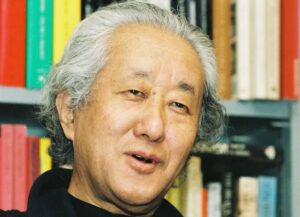Let’s take up the translation of “He”, “She” and the syntax of inanimate subjects.
We are taught from junior high school that he “Karewa” and she “kanojyowa” but the goo dictionary says the following.
A third-person personal pronoun referring to a man. That man. A translation of the third person masculine pronoun in Western languages. He is your brother?
A man who is a lover. A boyfriend. He’s your brother.
Meaning of “he” – goo Japanese Dictionary
We Japanese usually use the latter when we say “he” or “she”. It’s no wonder that when we apply this to English, the Japanese becomes quite unnatural.
If you don’t translate it as “he” or “she,” or if you specify the person’s name, it will work.
Let’s look at some simple examples.
In case of “He”, “She”
His name is Jim. He is a boy. He is 13 years old.
This sentence can be translated using the following translation software
名前はジム。彼は男の子です。彼は13歳です。
Namae wa jimu. Kare wa otokonokodesu. Kare wa 13-saidesu. (DeepL)
彼の名前はジムです。 彼は男の子です。 彼は13歳です。
Kare no namae wa jimudesu. Kare wa otokonokodesu. Kare wa 13-saidesu. (Google Translate)
彼の名前はジムです。彼は少年です。彼は13歳です。
Kare no namae wa jimudesu. Kare wa otokonokodesu. Kare wa 13-saidesu. (Full-scale translation 10)
It’s amazing that DeepL translated the first sentence as 名前はジム。”Namae wa jimu.”. His consecutive translation is the same result in both Google Translate and Full-Scale Translation 10.
Trial translation: ジムは13歳の男の子です。Jimu wa 13 saino otokonokodesu.
I think the three sentences have been changed to one sentence, which is quite refreshing.
The following is a trial translation into English.
Jim is a 13-year-old boy. Jim is a 13 year old boy. (DeepL)
Jim is a 13 year old boy. (Google translate)
A gym is a 13-year-old boy. (Full-scale translation 10)
Both DeepL and Google Translate gave the same result, but the Full-scale translation translated Jim as gym, which is fatal.
In case of inanimate subjects
Next, let’s look at English sentences with “inanimate subjects,” which originally did not exist in Japanese. It is said that foreign literature was introduced to Japan during the Meiji era. I think the linguistic sense of the translators who translated this “inanimate subject” construction in an adverbial way, with people as the subjects, is amazing. At the same time, you have also introduced a direct translation of the inanimate subject expression into Japanese. “What made him do it? and so on are completely natural in today’s Japan.
Let me give you a typical example of an “inanimate subject. You must learn this in high school, right?
The heavy rain prevented him from going out.
It’s not natural to translate it as 激しい雨が彼が外出するのを妨げた。”Hagesii Amega Karega gaishutu surunowo samatageta.”
Basically, the “inanimate subject” construction works well if you translate the subject as an adverb.
Heavy rain prevented me from going out.
大雨で外に出られない。”Oamede sotoni derarenai.”
大雨で外出ができなかった。”Oamede gaishutsu dekinakattta.”
大雨で外出できなかった。”Oamede gaishutsu dekinakattta.”
大雨で外出できず。”Oamede gaishutsu dekizu.” (DeepL)
大雨のため外出できませんでした。Ōame no tame gaishutsu dekimasendeshita. (Google Translate)
大雨のため、私は、外出できませんでした。”Oame no tame watasi wa gaishutu dekimasendesita”(Full-scale translation 10)
DeepL showed four of them. The translation “大雨で外出できず。”Oamede gaishutsu dekizu.” is a useful expression depending on the occasion.
Finally, here is the number of hits on Google for the sentence below.
Heavy rain prevented me from going out. 256,000,000 hits
I couldn’t go out because of heavy rain. 142,000,000 hits
As you can see, native English speakers use a lot of “inanimate subjects”.
From now on, don’t translate “he” as 彼は(Kare wa) or “she” as 彼女は(Kanojyo wa.
If you omit them or replace them with the names of people, it will work.
The inanimate subject construction works well if you translate the subject adverbially. ~なので(~Nanode), “~のために(~のために)” etc.
I’m amazed at DeepL. It’s an amazing world we live in where this is available for free.











コメント